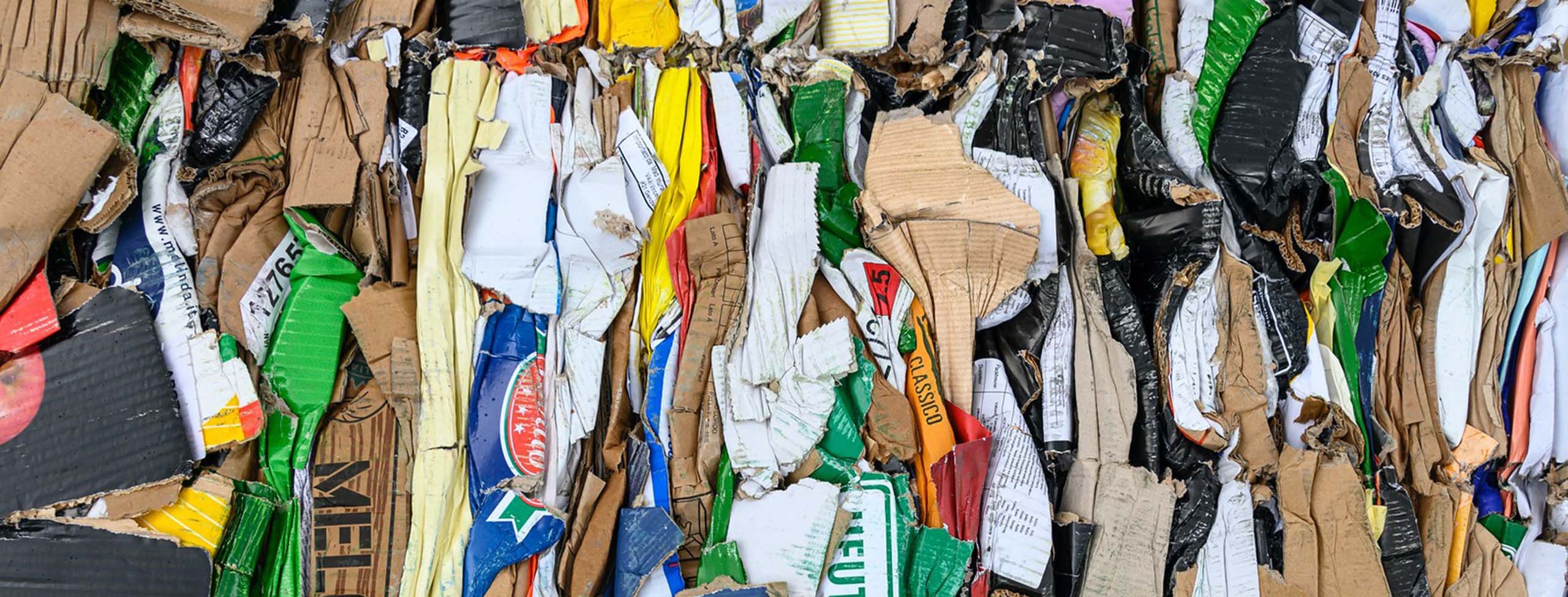
5 August 2024 • 10 minute read
State EPR roundup: Rulemaking proceeds under five extended producer responsibility statutes
Regulators in five states are moving to implement Extended Producer Responsibility (EPR) laws for packaging and other products as rulemaking and compliance deadlines approach.
These states are in a vanguard as EPR laws gain favor and momentum across the US and globally, bringing significant compliance requirements and challenges for producers.
Here is what producers should know as they prepare to operate under these comprehensive new regimes.
What are EPR laws?
EPR laws place responsibility for the end of a product’s lifecycle on its producer by incentivizing sustainable design, requiring producers to manage disposal and recycling costs, limiting the use of certain materials, and distributing costs among and within various industries, among other approaches.
EPR statutes have long covered plastic and packaging producers in Canada, Europe, and elsewhere. Many states have EPR programs in place for certain categories of products, including batteries, carpeting, electronics, mattresses, paint, and tires, some of which are decades old.
A recent wave of broad packaging EPR legislation has created comprehensive new regulatory regimes in California, Colorado, Maine, Minnesota, and Oregon, along with a framework for future EPR legislation in Maryland. Similar bills are being considered in other state legislatures this session, including Hawaii, Illinois, Massachusetts, New Hampshire, New Jersey, New York, Tennessee, and Washington.
Each of these new EPR laws requires covered producers to form and join a Producer Responsibility Organization (PRO), which is an independent, not-for-profit organization authorized to implement statutory goals by allocating both financial and nonfinancial responsibilities among producers.
Covered producers include manufacturers and distributers of products, packaging, food service ware, and certain paper products, as well as companies that pack products to ship.
Producers subject to packaging EPR laws include product and packaging manufacturers, food service ware brands, sellers and/or publishers of paper products, and companies that pack products purchased online for shipping, among others.
The definition of “producer” varies under each of the six statutes enacted to date, and regulators in each state may supply clarifying details regarding covered products and companies as rulemaking proceeds.
In each statute, “producer” generally includes companies that create products with packaging or single-use plastic items and, if that company is not located in-state, the US importer and distributor or seller of such products in-state. Some key differences are as follows:
- In California (SB 54), “producers” are companies whose products include single-use packaging or plastic items like forks and cups.
- In Colorado (HB22 1355), “producers” additionally include companies that package products for online sales, companies that make those packaging materials, and companies that make most paper products, like magazines.
- Minnesota (HF 3577) covers much the same companies as Colorado, but allows producers to contract with a separate entity to fulfill their EPR responsibilities by participating in the state PRO on their behalf.
- Oregon’s (SB 582) definition of “producer” focuses on makers of packaging rather than packaged products, along with paper products and disposable items for food service.
- Maine’s Stewardship Program for Packaging law calls a “producer” any company whose packaged products are sold in the state, leaving details to be fleshed out by regulators.
- Maryland created a Producer Responsibility Advisory Council (SB 222) to develop an EPR legislative proposal, under which “producer” will include companies that use packaging materials and companies that package and ship online purchases to customers in Maryland.
Each statute also provides limited exemptions, such as for packaging for medical products or certain separately regulated beverages, hazardous chemicals, and agricultural materials.
Depending on how regulations and enforcement develop, definitions like Colorado’s and Minnesota’s may make multiple entities responsible for different packaging elements used for a single product based on how and by whom it is packaged, sold, and distributed. Nuances in each statute, as well as rulemaking in each state, is likely to create a patchwork of varying obligations for companies that make, sell, and ship consumer goods.
Producers must join a PRO selected by each state or separately demonstrate compliance.
In most states, one PRO will represent producers and work with regulators as reporting obligations begin to take effect. So far, Circular Action Alliance (CAA) is the designated PRO in California, Colorado, and Maryland, and is the only PRO that has applied to implement Oregon’s EPR law.
CAA is required to submit a list of registered producers to the Oregon regulator by September 27, 2024, and Colorado regulations require producers to register with CAA by October 1, 2024. By July 1, 2025, Colorado and Oregon producers must be members of CAA or a PRO implementing an approved producer responsibility program.
Under certain circumstances, a covered producer may demonstrate EPR compliance without joining a PRO. In California, for example, a producer with specific data showing high recycling rates for its product (at least 65 percent for three consecutive years before 2027 and 70 percent or more from 2027 on), or meeting specified source reduction and recycling rate targets, need not join a PRO.
By January 1, 2027, California producers must either receive approval from CalRecycle under one of these alternative compliance options or must register with a PRO with an approved plan, ie, CAA.
The $5 billion California Plastic Pollution Mitigation Fund
EPR laws are funded by annual producer dues paid to the PRO. California’s SB 54 goes further, however: From 2027 to 2037, producers of plastic covered material must pay $500 million annually through the PRO into a new California Plastic Pollution Mitigation Fund.
The PRO may collect up to $150 million of the annual contribution from manufacturers of plastic resin that are not themselves covered producers, but that supply plastic to members of the PRO.
The remainder of the annual payment shall be paid by each producer based on its market share, by weight and number, of covered plastic products.
Producers opting for individual compliance rather than PRO participation must separately contribute to the fund in an amount determined by CalRecycle.
Rulemaking is underway to implement packaging EPR statutes.
Many new EPR laws designate state regulators to answer questions about the laws’ scope and to clarify producers’ responsibilities for various covered materials.
Minnesota’s EPR program became law on May 21, 2024, for example, and the state Pollution Control Agency must adopt rules to implement specified reduction, reuse, recycling, and composting rates no later than May 22, 2025.
Elsewhere, regulators are mandated to set fundamental EPR thresholds for producers and municipalities: Maine’s Department of Environmental Protection has released draft rules that would require a 90 percent collection rate of readily recyclable packaging by 2040 and a 60 percent reduction of packaging by total units and weight by 2050, figures the statute tasked it to decide.
In California, SB 54 sets a 2032 deadline by which producers must ensure covered plastic materials are reduced by 25 percent and recycled at a 65 percent rate, and that all single-use packaging plus plastic food ware is 100 percent recyclable or compostable, along with interim targets for each goal.
CalRecycle’s mandate under the statute includes analyzing, defining, and periodically updating the state’s list of covered materials. CalRecycle’s determination of which packaging and food ware materials are “recyclable” or “compostable” will decide whether materials can be sold in the state after 2032, and its recycling rates studies will evaluate the PRO’s and producers’ compliance with their statutory obligations.
CalRecycle has released draft regulations and published a covered material categories list that includes glass, ceramic, metal, paper and fiber, plastic, wood, and other organic products. By January 1, 2025, CalRecycle is required to adopt final implementation rules and complete its first annual evaluation of covered materials’ compostability and recyclability.
By January 1, 2026, CalRecycle must calculate and publish recycling rates for each covered material category, leaving the PRO two years to meet its 2028 deadline to ensure that recycling rates reach 30 percent. By 2030, 40 percent of covered materials must be recycled in the state.
In Colorado, the state regulator is also working in tandem with CAA to define which materials are recyclable and develop recycling and composting systems. Working with the Colorado Department of Public Health and Environment, CAA conducted a statewide needs assessment and will undertake standardization measures to improve recycling collection and expand composting infrastructure.
CAA has issued a list of “minimum” materials that must be collected by Colorado curbside recycling, including clear PET (polyethylene terephthalate, or resin identification code #1) containers, HDPE (high density polyethylene, or resin identification code #2) containers, corrugated cardboard, and uncoated paper, as well as “additional” materials that may be collected, including poly-coated packaging and film. CAA’s PRO Program Plan to implement these changes is due to the department by February 1, 2025.
State regulators have also worked to define key concepts including “responsible end markets,” an EPR term of art that means markets for material in which recycling, recovery, and disposal benefits the environment and minimizes risks to public and worker health and safety.
EPR laws require PROs to ensure that covered materials reach responsible end markets after disposal and define “recycled” materials as only those that reach such markets.
Oregon’s Environmental Quality Commission has defined “responsible end market” to include the entity that first uses recycled glass instead of virgin glass; the entity that last processes certain recycled plastic resins before they are sold to a manufacturer; the entity that smelts recycled metal to produce ingots, sheet, or coil; or the entity that repulps recycled paper. The Oregon regulator has also adopted a list of recyclable materials under SB 582.
The role of trade associations
PROs are the cornerstone of these EPR laws, serving as a bridge between producers and state regulators. They play a crucial role in allocating responsibilities and managing the financial and operational aspects of compliance.
Just as important, however, trade organizations can be valuable allies for producers and their respective industries.
Many trade groups are cultivating the expertise and resources to assist producers in understanding and meeting their EPR obligations. They can provide guidance on best practices, facilitate collaboration, and represent industry interests in discussions with regulators.
By leveraging the support of trade organizations, producers may better manage the complexities of EPR compliance.
Conclusion
As the regulatory landscape for EPR laws continues to evolve, producers face potentially exponential increases in both financial and regulatory burdens.
With each state defining “producer” differently and setting unique compliance requirements, the task of navigating these laws is no small feat.
Producers are encouraged to stay informed, collaborate effectively, and utilize the support systems available to them, including trade organizations, to successfully navigate the intricate tapestry of state-specific EPR requirements.
Early assessment of compliance risks and PRO participation may be critical to protecting the interests of individual producers and industries alike.
DLA Piper’s Plastics Taskforce closely monitors developments in plastics regulation and enforcement. Please contact any of the authors for additional information.


